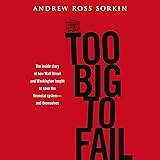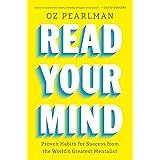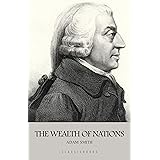As the festive season approaches, many turn their thoughts to traditional investments. Dussehra, in particular, often sparks conversations about gold. This year, the debate is hotter than ever. Should you buy more gold, or is it time to consider booking profits?
The video above tackles this precise question. It offers expert insights from CA Rachana Ranade. She dives into gold’s current market position. We will explore both short-term and long-term outlooks for gold investing. This guide helps you navigate your Dussehra gold decisions.
Understanding the Gold Market: A Short-Term Technical View
Many investors wonder about gold’s immediate future. Gold has shown significant volatility. Technical analysis helps us understand these movements.
Is Gold Overheated? Examining RSI and Price Action
A look at the charts reveals important patterns. Gold MCX Futures saw a rapid 20% rally. This happened in just 30 trading days. This rapid surge prompts caution among analysts.
The Relative Strength Index (RSI) is a key indicator. It tells us if an asset is overbought or oversold. An RSI above 80 typically signals an overbought zone. The video highlights gold’s current RSI at a super crazy 93. This is a clear indication of market exuberance.
Imagine if a car goes too fast for too long. It eventually needs to cool down. Historically, such high RSI levels predict corrections. In July 2020, an RSI of 88 led to an 18-19% correction. This spanned roughly eight to nine months. Similarly, in October 2024, an RSI spike caused an 8% correction. This correction happened over two months.
However, we are in a festive season. Demand for gold traditionally increases. Dussehra, Diwali, and the wedding season drive purchases. This demand could provide some short-term support. Pure technical analysis, though, suggests a cool-off might be due.
Gold’s Performance: A Look at Historical Returns
Understanding gold’s past performance is crucial. It helps inform future investment decisions. The data below is from Gold MCX Futures, as of September 30th each year. This provides a clear picture of gold’s journey.
Gold MCX Futures Annual Returns (2015-2025)
- **2015:** Base value 26,083
- **2016:** 18.78% return (Value: 30,981)
- **2017:** -4% return
- **2018:** 2.6% return
- **2019:** 22% return
- **2020:** 34.86% return
- **2021:** -7.5% return
- **2022:** 7.9% return
- **2023:** 14.75% return
- **2024:** 31.28% return
- **2025:** 55.63% return
These figures show significant swings. Gold provided double-digit returns in 2016, 2019, 2020, 2023, 2024, and 2025. Over the last three years (2023-2025), gold has given more than 100% returns. From its lowest point in March 2023, gold has rallied an impressive 105% in two years.
This remarkable rally leads to a key question. Is now the right time for a bulk investment? The video advises caution here. While some upside might remain, the risk-reward ratio looks tricky. However, if you invest through Systematic Investment Plans (SIPs), the situation differs. SIPs smooth out market volatility. They allow regular, smaller investments over time.
Why Gold Remains Attractive: Fundamental Drivers for Long-Term Growth
Despite short-term concerns, gold holds strong long-term potential. Several fundamental factors support this view. These factors make gold a valuable asset for portfolio diversification.
Central Banks and De-Dollarization
Central banks globally are increasing their gold reserves. Institutions like the RBI, China’s Central Bank, and Russia’s Central Bank are active buyers. This trend signals a shift. Many countries are exploring de-dollarization. They seek to reduce reliance on the US dollar as a primary reserve currency. Gold offers an alternative. It acts as a stable reserve asset. This increasing institutional demand drives gold prices higher.
Interest Rate Cuts and Geopolitical Uncertainty
Expectations of future interest rate cuts also bolster gold. When interest rates fall, the dollar tends to weaken. A weaker dollar makes gold cheaper for international buyers. This increases demand. Also, gold has historically been a safe haven asset. During times of global geopolitical uncertainty, investors flock to gold. It provides stability when other assets are volatile. Ongoing global tensions further fuel gold’s appeal. It acts as a shield against economic and political instability.
In summary, the short-term outlook suggests a potential pullback. However, the medium to long-term prospects for gold remain strong. Central bank buying, de-dollarization efforts, expected rate cuts, and geopolitical risks all support a continued rally.
Beyond Physical Gold: Investing Smartly with Gold Mutual Funds
While physical gold is a traditional choice, other options exist. Gold Exchange Traded Funds (ETFs) and Sovereign Gold Bonds (SGBs) are popular. However, the video introduces a less discussed option: gold mutual funds or gold fund of funds. These offer a different approach to gold investing.
Gold ETFs vs. Gold Mutual Funds: A Key Distinction
It is important to understand the difference. Gold ETFs typically invest directly in physical gold. They track gold prices. This provides direct exposure to the metal. Gold mutual funds, on the other hand, invest in gold ETFs. The fund manager of a gold mutual fund buys units of gold ETFs. So, a gold mutual fund’s portfolio consists of gold ETF units. This provides indirect exposure to gold through a managed fund structure. This structure offers diversification benefits within the gold market itself.
How to Choose: Analyzing Gold Mutual Funds with Five Key Parameters
Selecting the right gold mutual fund requires careful analysis. The video outlines five essential parameters. These help investors make informed decisions. Using these metrics ensures you choose a fund aligned with your goals.
1. Assets Under Management (AUM)
AUM represents the total value of assets managed by the fund. Generally, a higher AUM is better. It indicates investor confidence. A larger fund often has better liquidity. Funds like SBI Gold, HDFC Gold, Nippon India Gold, Kotak Gold, and ICICI Pru Gold have high AUMs. These are good starting points for your research.
2. Compounded Annual Growth Rate (CAGR)
CAGR measures the average annual growth rate of an investment. For gold mutual funds, a higher CAGR is desirable. This indicates better historical performance. Always compare CAGR over similar timeframes. For instance, a 3-year CAGR gives a good recent performance snapshot. Look for funds that consistently outperform their peers.
3. Expense Ratio
The expense ratio is the annual fee charged by the fund. It covers operational costs. A lower expense ratio is always better. It means more of your money works for you. Even small differences can impact long-term returns significantly. Compare expense ratios across similar funds to find the most cost-effective option.
4. Standard Deviation
Standard deviation measures a fund’s volatility or risk. A lower standard deviation is better. It indicates more consistent returns. Imagine a fund with wild price swings. Its standard deviation would be high. A fund with smooth growth has a lower standard deviation. This implies a less risky investment path.
5. Sharpe Ratio
The Sharpe Ratio measures risk-adjusted return. A higher Sharpe Ratio is better. It indicates superior returns for the amount of risk taken. This ratio helps you assess a fund’s efficiency. It shows if the returns are worth the associated risk. A fund with a high Sharpe Ratio generates good returns without excessive volatility.
Applying these five parameters helps in your selection. For example, SBI Gold often shows strong performance across these metrics. This includes a higher lifetime CAGR and a lower standard deviation. It also has a higher Sharpe ratio among its peers. Always remember, this is for educational purposes. Always conduct your own research before making any gold investment decisions.
Ultimately, making informed decisions about gold investing requires understanding. It combines market dynamics with personal financial goals. This Dussehra, consider these insights for your gold strategy. Make wise choices for your portfolio.











